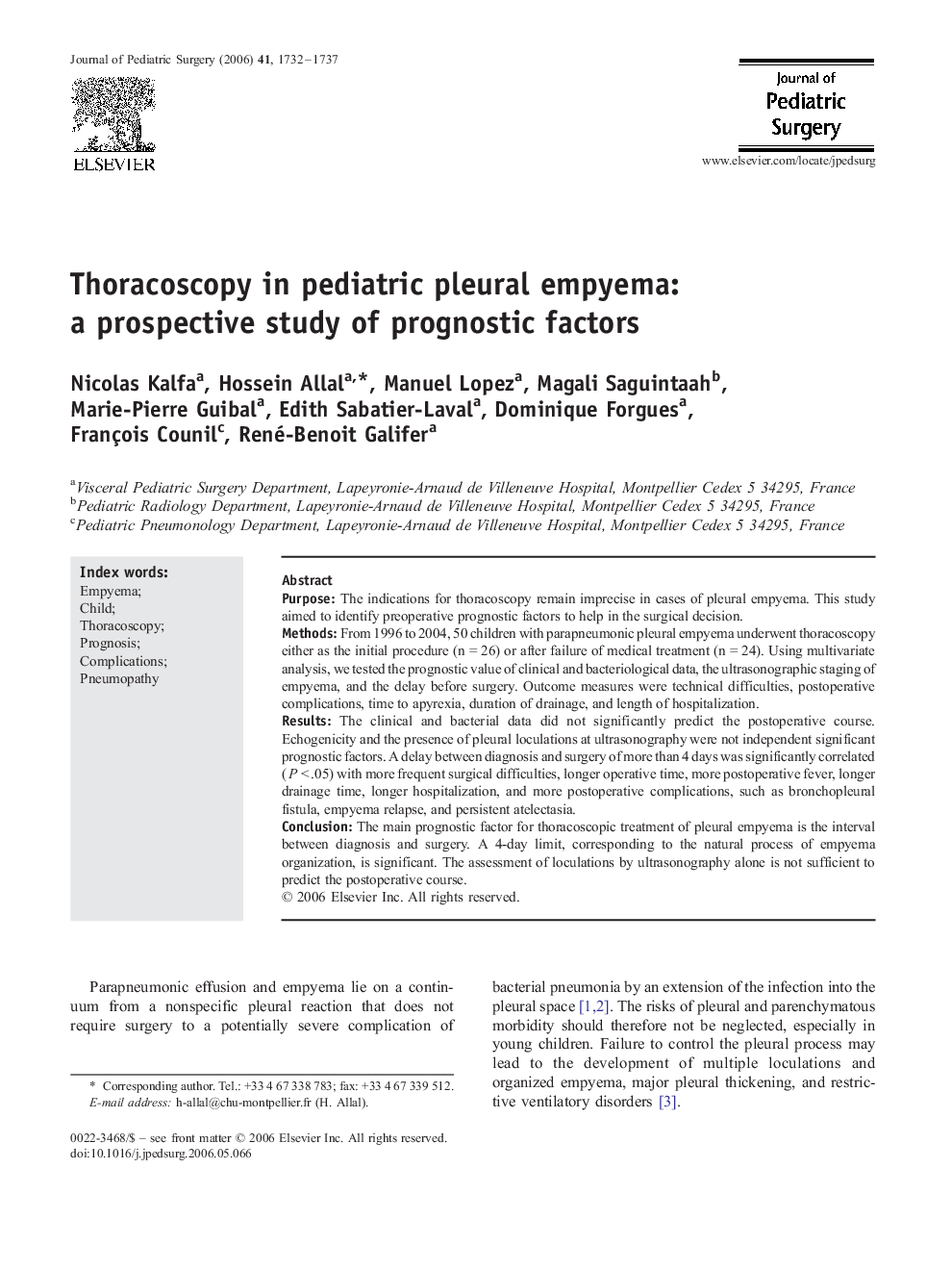| Article ID | Journal | Published Year | Pages | File Type |
|---|---|---|---|---|
| 4160733 | Journal of Pediatric Surgery | 2006 | 6 Pages |
PurposeThe indications for thoracoscopy remain imprecise in cases of pleural empyema. This study aimed to identify preoperative prognostic factors to help in the surgical decision.MethodsFrom 1996 to 2004, 50 children with parapneumonic pleural empyema underwent thoracoscopy either as the initial procedure (n = 26) or after failure of medical treatment (n = 24). Using multivariate analysis, we tested the prognostic value of clinical and bacteriological data, the ultrasonographic staging of empyema, and the delay before surgery. Outcome measures were technical difficulties, postoperative complications, time to apyrexia, duration of drainage, and length of hospitalization.ResultsThe clinical and bacterial data did not significantly predict the postoperative course. Echogenicity and the presence of pleural loculations at ultrasonography were not independent significant prognostic factors. A delay between diagnosis and surgery of more than 4 days was significantly correlated (P < .05) with more frequent surgical difficulties, longer operative time, more postoperative fever, longer drainage time, longer hospitalization, and more postoperative complications, such as bronchopleural fistula, empyema relapse, and persistent atelectasia.ConclusionThe main prognostic factor for thoracoscopic treatment of pleural empyema is the interval between diagnosis and surgery. A 4-day limit, corresponding to the natural process of empyema organization, is significant. The assessment of loculations by ultrasonography alone is not sufficient to predict the postoperative course.
